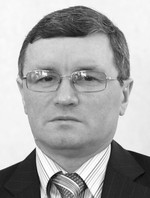Middle-distance runners competitive fitness rating by functionality test method
Фотографии:
ˑ:
Fizicheskaya kultura: vospitanie, obrazovanie, trenirovka №3-2017, pp.43-45
Dr.Hab., Associate Professor I.K. Latypov1
PhD, Associate Professor S.N. Pavlov1
PhD, Associate Professor F.A. Mavliev1
A.V. Mastrov1
Master's student S.A. Gerasimov1
1Volga Region State Academy of Physical Culture, Sports and Tourism, Kazan
The study was designed to analyse the anaerobic workability of 20-23 year-old middle-distance runners by a functionality test method. The test data and analyses made it possible to identify the most informative indices to rate the middle-distance runners’ competitive fitness. Prior to and after the precompetitive training period, the athletes were tested in laboratory conditions by a sub-maximal graded treadmill exercise test. The test generated the following data: anaerobic threshold (AnT): VO2 (l/min), VO2 (ml/min/kg), HR, VE (BTPS) l/min, VO2/HR, and the anaerobic threshold reaching time; maximal oxygen consumption (MOC): VO2 (l/min), VO2 (ml/min/kg), HR, VE (BTPS) l/min, VO2/HR, and MOC time. The post-training tests were run upon completion of the mid-altitude training period.
The study data and analyses showed that a top priority in the middle-distance runner’s fitness rating tests will be given to the oxygen consumption at the anaerobic threshold and VO2max rates; with the MOC and AnT growth rates being indicative of the runner’s functional fitness improvement and potential competitive progress.
Keywords: aerobic capacity, maximum oxygen consumption, anaerobic threshold, training process.
References
- Apanasenko G.L., Naumenko R.G. Fizicheskoe zdorovye i maksimalnaya aerobnaya sposobnost individa [Physical health and maximal aerobic capacity of individual]. Teoriya i praktika fiz. kultury, 1988, no. 6, pp. 29-30.
- Pavlov S.N. Osobennosti nasosnoy funktsii serdtsa sportsmenov-girevikov. Avtoref. dis. kand. biol. nauk [Features of heart pumping function of kettlebell lifters. PhD diss. abstract]. Kazan, 2008, 24 p.
- Popov D.V., Vinogradova O.L., Grigoryev A.I. Aerobnaya rabotosposobnost cheloveka [Aerobic capacity of man]. Moscow: Nauka publ., 2012, p. 111.
- Shirkovets E.A. Sravnenie effektivnosti dvukh testov opredeleniya maksimuma O2-potrebleniya u sportsmenov [Comparison of efficiency of two maximum oxygen consumption tests in athletes]. Vestnik sportivnoy nauki, 2010, no. 5, pp. 15-18.
- Astrand PV, Rodahl K, Dahl H.A., et al. Textbook of work physiology: physiological bases of exercise.4th ed. New York: Human Kinetics, 2003.
- Blomqvist C.G., Saltin B. Cardiovascular adaptations to physical training. Annu Rev Physiol, 1983;45:169-89.
- Davis J.A., Storer T.W., Caiozzo VJ, Pham P.H. Lower reference limit for maximal oxygen uptake in men and women. Clin. Physiol. and Funct. Imag., 2002, 22, no. 5, pp. 332-338.
- 8. Koppo K., Bouckaert J., Jones A. Effects of Training Status and Exercise Intensity on Phase II VO2 Kinetics. Med. Sci. Sports Exerc., 2004, vol. 36, no. 2, pp. 225-232.
- Stöcker, F., Von Oldershausen, C., Paternoster, F.K., Schulz, T., Oberhoffer, R. End-exercise ΔHHb/ΔVO2 and post-exercise local oxygen availability in relation to exercise intensity. Clin Physiol Funct Imaging. 2015. doi:10.1111/cpf.12314
- William Kinnear, John Blakey, A Practical Guide to the Interpretation of Cardiopulmonary Exercise Tests. 4th edn. Oxford University Press, Oxford, 2014; 100 p.


